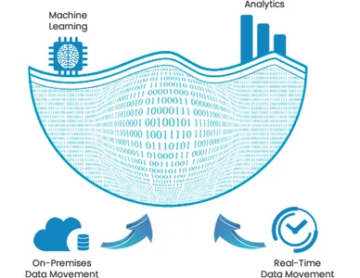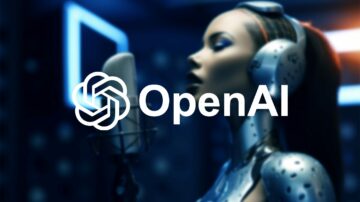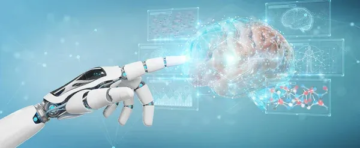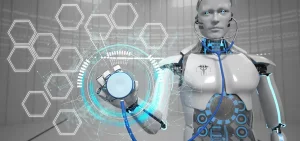Introduction
In the realm of artificial intelligence, generative AI systems have emerged as the virtuosos of creativity, capable of composing symphonies, crafting vivid prose, and generating stunning visual art. Yet, despite these remarkable accomplishments, a fundamental challenge persists – the static nature of these AI creations. Once trained, conventional generative AI models are frozen in time, incapable of adapting to new information or evolving their creative prowess. This is where continual learning in generative AI comes into play.
In this article, we embark on a journey into the realm of generative AI and the art of continual learning. We will explore the challenges and innovative approaches that enable AI systems to learn and adapt to new data over time.
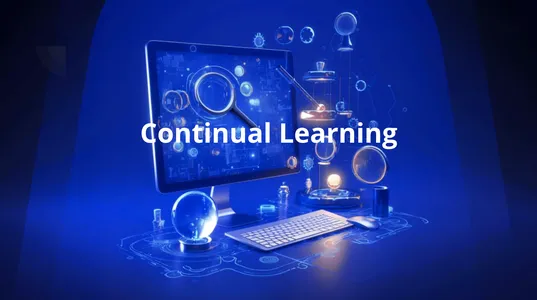
Learning Objectives
- Gain a comprehensive understanding of the concept of continual learning and its significance in the context of generative artificial intelligence.
- Understand the different approaches to enable continual learning.
- Explore real-world applications of AI with continual learning capabilities.
- Learn about the importance of responsible AI development in the context of continual learning, including ethical frameworks and regulatory considerations.
This article was published as a part of the Data Science Blogathon.
Table of Contents
The Need for Continual Learning in Generative AI
In the world of artificial intelligence, the static nature of traditional AI models poses a significant challenge. These models, once trained, remain fixed in their knowledge and abilities, unable to adapt to new information or changing contexts. This rigidity limits their applicability in dynamic real-world scenarios. For instance, in natural language processing, static models may struggle to understand evolving language usage, and in the creative realm, they cannot explore new artistic trends or techniques.
To overcome these limitations, the concept of continual learning has emerged. It represents a shift away from static AI models, introducing a dynamic approach where AI systems can learn, adapt, and grow over time. This paradigm opens doors to AI that not only generates creative content but also evolves its creative capabilities, mimicking the fluidity of human learning and creativity. In the following sections, we will delve into the challenges and innovative approaches that make continual learning a promising frontier in generative AI.
Challenges in Continual Learning for Generative AI
While the promise of continual learning in generative AI is alluring, it comes with its own set of formidable challenges. One of the core issues lies in the cognitive differences between human and machine learning. Unlike humans, who naturally adapt to new information, AI systems often struggle with the phenomenon known as “catastrophic forgetting.” This means that as they learn new things, they tend to forget previously learned knowledge, posing a significant hurdle in the quest for continuous adaptation.
Additionally, there’s the intricate balance of stability and plasticity. AI systems must maintain a stable foundation of knowledge while remaining plastic enough to absorb new information effectively. Striking this balance is crucial for ensuring that continual learning doesn’t result in a complete overhaul of the AI’s existing knowledge base, which could render it less reliable.
Moreover, scalability remains a challenge. As AI systems accumulate knowledge over time, their memory and processing demands can become impractical, especially in resource-constrained environments. Navigating these challenges is vital to harnessing the full potential of continual learning in generative AI, a journey we’ll explore in the upcoming sections.
Approaches to Enable Continual Learning in Generative AI
Enabling continual learning in generative AI involves a variety of innovative strategies and techniques. Let’s explore a few of them:

1. Replay and Memory
AI systems can remember and replay past experiences. This helps combat catastrophic forgetting, ensuring that valuable knowledge isn’t lost. Here’s a simplified conceptual example in Python:
class AIModel: def __init__(self): self.memory = [] def remember(self, experience): self.memory.append(experience) def replay(self): for experience in self.memory: self.learn(experience) def learn(self, experience): # Update the model based on the experience. pass2. Transfer Learning
Transfer learning involves using knowledge learned from one task to benefit another. Pre trained models, like GPT-3 in natural language processing, serve as a starting point for various downstream tasks. Although it doesn’t directly apply to generative AI, it’s a fundamental approach. Here is simple example:
from transformers import GPT3Model, GPT3Tokenizer model = GPT3Model.from_pretrained("gpt3")
tokenizer = GPT3Tokenizer.from_pretrained("gpt3") input_text = "Translate this English text to French: 'Hello, how are you?'"
inputs = tokenizer(input_text, return_tensors="pt") # Use the pretrained model for translation or other tasks.
outputs = model(**inputs)3. Modular Architectures
Modular AI architectures allow for the addition of new modules without disrupting existing knowledge. For instance, in a neural network, you can add new layers for specific tasks. Here is a simple example:
class ModularAI: def __init__(self): self.base_model = BaseModel() self.new_module = NewModule() def forward(self, input_data): base_output = self.base_model(input_data) new_output = self.new_module(base_output) return new_outputThese approaches, while simplified, illustrate the concepts behind enabling continual learning in generative AI. In practice, implementing them effectively requires careful design and consideration of specific use cases and models.
Real-World Applications and Case Studies
As we delve deeper into the realm of generative AI and continual learning, it’s crucial to explore how these concepts translate into real-world applications that impact our daily lives. Let’s take a closer look at some notable case studies and practical applications:

1. Natural Language Processing (NLP)
In the domain of NLP, continually evolving AI models have made significant strides. Consider chatbots and virtual assistants like Siri or chat support agents. These systems continually learn from user interactions, adapting to evolving language patterns and user preferences. For instance, chatbots employed in customer service can provide more personalized responses over time, enhancing the user experience.
2. Creative Content Generation
Generative AI’s applications extend to creative fields such as art, music, and literature. Artists and musicians are experimenting with AI to create innovative pieces. For instance, AI-driven music composers like OpenAI’s MuseNet have composed original compositions across various genres, learning from vast musical datasets to produce harmonious melodies.
3. Medical Imaging
In healthcare, AI’s continual learning capabilities are proving invaluable. AI models can adapt and improve diagnostic accuracy in medical imaging. For example, AI systems used for detecting anomalies in X-rays continually update their knowledge to enhance their ability to spot potential health issues, contributing to more accurate diagnoses.
4. Autonomous Vehicles
The development of self-driving cars relies on AI systems that continually learn and adapt to different driving conditions. These vehicles continuously update their knowledge, improving their ability to navigate complex traffic situations and enhance safety.
5. Language Translation
AI-powered language translation services, such as Google Translate, continually improve their translations by learning from user feedback. They adapt to evolving language trends and idiomatic expressions, resulting in more accurate translations.
6. Financial Forecasting
In the financial sector, AI models that continually learn from market data can provide more accurate predictions. These models adapt to changing economic conditions and emerging market trends, assisting traders and investors in making informed decisions.
These real-world applications illustrate how continual learning in generative AI is transforming various industries. By adapting to new data and experiences, AI systems are becoming more reliable, efficient, and capable of enhancing our daily lives. As we move forward, these applications will continue to evolve, making AI an indispensable part of our rapidly changing world.
Ethical and Societal Considerations
While the potential of continual learning in generative AI is undoubtedly promising, it comes with a set of ethical and societal considerations that must not be overlooked.
1. Bias and Fairness
Continual learning in AI systems can inadvertently perpetuate biases present in the data they are trained on. For example, if an AI model continually learns from biased historical data, it may reinforce existing prejudices. Ensuring fairness in AI systems is a critical challenge, requiring careful monitoring and mitigation of bias throughout the learning process.
2. Transparency and Accountability
As AI systems continually adapt and learn, it can become challenging to trace their decision-making processes. This lack of transparency raises concerns about accountability, particularly in critical applications like autonomous vehicles or medical diagnoses. Ethical AI should allow humans to understand and question the reasoning behind AI-generated decisions.
3. Data Privacy
Continual learning often involves the accumulation of large datasets over time. Protecting the privacy of individuals whose data contributes to this learning is paramount. Striking a balance between AI’s need for data and safeguarding individual privacy is an ongoing challenge.
4. Job Displacement
The automation potential of AI, driven by continual learning, raises concerns about job displacement in various industries. As AI systems become more versatile, there is a need to consider the broader societal impact, including potential job transitions and reskilling requirements.
5. Regulatory Frameworks
The rapid evolution of AI with continual learning capabilities necessitates agile and adaptable regulatory frameworks. These frameworks must ensure the responsible development and deployment of AI systems, addressing ethical concerns and ensuring compliance with legal standards.
6. Long-Term Effects
Continual learning AI systems are designed to adapt and evolve over time. Understanding the long-term effects of such systems on society, economy, and culture is a complex challenge. Monitoring and studying these effects will be crucial in shaping ethical AI development.

In navigating these ethical and societal considerations, it’s imperative to establish clear guidelines and governance mechanisms. Open dialogue among researchers, policymakers, and stakeholders is vital to strike the right balance between technological advancement and ethical responsibility. As AI systems with continual learning capabilities become more integrated into our lives, addressing these ethical concerns will be a defining aspect of responsible AI development.
The Future of Continual Learning in Generative AI
As we journey deeper into the realm of generative AI and its quest for continual learning, the horizon is illuminated with boundless possibilities and transformative potential. The future of this field holds several exciting prospects:
1. Dynamic Creativity
Generative AI systems with continual learning capabilities are poised to redefine creativity itself. Imagine AI artists that evolve alongside changing art movements or AI composers that craft music reflecting the zeitgeist of the moment. This dynamic creativity could yield novel forms of artistic expression and innovation.
2. Personalized Experiences
Continual learning in AI will pave the way for highly personalized user experiences. Virtual assistants will become more attuned to individual preferences, content recommendations will be finely tailored, and creative content, such as stories or artwork, will resonate more deeply with users.
3. Lifelong Learning Companions
AI systems that continually learn and adapt could serve as lifelong learning companions. They will assist individuals in acquiring new skills, from languages to practical expertise, adapting to the learner’s pace and evolving with them throughout their journey.
4. Cross-Domain Expertise
Future AI models may excel in multiple domains, from medicine to finance, mastering the ability to adapt and provide expert-level insights. This cross-domain expertise could revolutionize decision support systems, enhancing problem-solving and innovation.
5. Ethical Frameworks
The ethical dimension of continual learning will become increasingly critical. AI systems will need to adhere to robust ethical frameworks, safeguarding against biases, ensuring transparency, and respecting privacy, all while adapting and learning from new data.
6. Regulatory Evolution
The evolving nature of AI with continual learning capabilities will necessitate flexible and adaptive regulatory frameworks. Governments and institutions will need to stay ahead of the curve to ensure responsible AI development and deployment.
7. Collaboration with Humans
As AI systems continually learn and adapt, they will increasingly collaborate with humans in various domains. AI will be a partner in research, creativity, and decision-making, augmenting human capabilities rather than replacing them.

In this future landscape, generative AI systems with continual learning will stand as dynamic, adaptable companions in our daily lives, fostering creativity, personalization, and lifelong learning. They will reshape industries, challenge ethical norms, and offer new opportunities for collaboration. While challenges persist, the journey toward AI with the capacity to continually learn promises a world where technology truly adapts and evolves alongside humanity.
Conclusion
In the grand tapestry of artificial intelligence, the concept of continual learning within generative AI stands as a remarkable thread of progress. It brings out the potential of machines that, while generating creative content, can also evolve their creative capabilities, much like a seasoned human artist mastering their craft. It propels us toward a future where machines are not just static tools but dynamic, ever-evolving companions in our creative endeavors and problem-solving quests.
Key Takeaways
- Continual learning empowers AI to adapt, refine, and broaden its capabilities over time, making it a versatile partner in various domains.
- The real-world applications of generative AI with continual learning are seen in industries like healthcare, language processing, and more.
- As AI evolves, striving for fairness, transparency, and data privacy remains vital to ensure that AI’s power is wielded responsibly.
Frequently Asked Questions
Ans. Continual learning in generative AI refers to the capability of AI systems to adapt and evolve their knowledge and abilities over time, much like how humans continually learn and improve their skills.
Ans. Continual learning enhances AI’s adaptability, making it invaluable in various real-world applications such as healthcare, language processing, and creative fields, where it can provide personalized experiences and improve decision-making.
Ans. Ethical considerations include the potential for AI to perpetuate biases in data, the need for transparency in decision-making, and safeguarding data privacy as AI continually learns from new information.
Ans. The future envisions AI as collaborative partners with humans, augmenting our creative and problem-solving capabilities. AI systems will adapt and evolve alongside humans, fostering innovation and creativity.
Ans. Dynamic creativity in generative AI refers to the exciting prospect of AI artists, composers, and writers evolving their style and content to match changing trends and user preferences, ushering in new forms of artistic expression.
The media shown in this article is not owned by Analytics Vidhya and is used at the Author’s discretion.
Related
- SEO Powered Content & PR Distribution. Get Amplified Today.
- PlatoData.Network Vertical Generative Ai. Empower Yourself. Access Here.
- PlatoAiStream. Web3 Intelligence. Knowledge Amplified. Access Here.
- PlatoESG. Carbon, CleanTech, Energy, Environment, Solar, Waste Management. Access Here.
- PlatoHealth. Biotech and Clinical Trials Intelligence. Access Here.
- Source: https://www.analyticsvidhya.com/blog/2023/10/evolving-creativity-continual-learning-in-generative-ai-systems/
- :has
- :is
- :not
- :where
- 08
- 10
- 11
- 12
- 13
- 16
- 302
- a
- abilities
- ability
- About
- accomplishments
- accountability
- Accumulate
- accumulation
- accuracy
- accurate
- acquiring
- across
- adapt
- adaptability
- adaptation
- adapting
- adapts
- add
- addition
- addressing
- adhere
- advancement
- against
- agents
- agile
- ahead
- AI
- AI models
- AI systems
- All
- allow
- alongside
- also
- Although
- among
- an
- analytics
- Analytics Vidhya
- and
- Another
- applications
- Apply
- approach
- approaches
- ARE
- Art
- article
- artificial
- artificial intelligence
- artist
- artistic
- Artists
- artwork
- AS
- asked
- aspect
- assist
- assistants
- assisting
- associated
- At
- Automation
- autonomous
- autonomous vehicles
- away
- Balance
- base
- based
- BE
- become
- becoming
- behind
- benefit
- between
- bias
- biased
- biases
- blogathon
- Boundless
- Brings
- broaden
- broader
- but
- by
- CAN
- cannot
- capabilities
- capability
- capable
- Capacity
- careful
- cars
- case
- Case Studies
- cases
- catastrophic
- challenge
- challenges
- challenging
- changing
- chatbots
- clear
- closer
- cognitive
- collaborate
- collaboration
- collaborative
- combat
- comes
- companions
- complete
- complex
- compliance
- composed
- comprehensive
- concept
- concepts
- conceptual
- Concerns
- conditions
- Consider
- consideration
- considerations
- content
- context
- contexts
- continually
- continue
- continuous
- continuously
- contributes
- contributing
- conventional
- Core
- could
- craft
- create
- creations
- Creative
- creativity
- critical
- crucial
- Culture
- curve
- customer
- Customer Service
- daily
- data
- data privacy
- data science
- datasets
- decision
- Decision Making
- decisions
- deeper
- defining
- delve
- demands
- deployment
- Design
- designed
- Despite
- Development
- diagnoses
- dialogue
- differences
- different
- Dimension
- directly
- discretion
- does
- Doesn’t
- domain
- domains
- doors
- driven
- driving
- dynamic
- Economic
- Economic Conditions
- economy
- effectively
- effects
- efficient
- embark
- emerged
- emerging
- emerging market
- employed
- empowers
- enable
- enabling
- endeavors
- English
- enhance
- Enhances
- enhancing
- enough
- ensure
- ensuring
- environments
- envisions
- especially
- establish
- Ether (ETH)
- ethical
- evolution
- evolve
- evolves
- evolving
- example
- Excel
- exciting
- existing
- experience
- Experiences
- expertise
- explore
- expression
- expressions
- extend
- fairness
- feedback
- few
- field
- Fields
- finance
- financial
- Financial sector
- fixed
- flexible
- fluidity
- following
- For
- formidable
- forms
- Forward
- fostering
- Foundation
- frameworks
- French
- from
- Frontier
- frozen
- full
- fundamental
- future
- generates
- generating
- generative
- Generative AI
- google translate
- governance
- Governments
- grand
- Grow
- guidelines
- harmonious
- Harnessing
- Have
- Health
- healthcare
- helps
- here
- High
- highly
- historical
- holds
- horizon
- How
- HTTPS
- human
- Humanity
- Humans
- if
- imagine
- Imaging
- Impact
- imperative
- implementing
- import
- importance
- improve
- improving
- in
- inadvertently
- incapable
- include
- Including
- increasingly
- individual
- individuals
- industries
- information
- informed
- Innovation
- innovative
- inputs
- insights
- instance
- institutions
- integrated
- Intelligence
- interactions
- into
- intricate
- introducing
- invaluable
- Investors
- involves
- issues
- IT
- ITS
- itself
- Job
- journey
- just
- knowledge
- known
- Lack
- landscape
- language
- Languages
- large
- layers
- LEARN
- learned
- learning
- Legal
- less
- lies
- Life
- like
- limitations
- limits
- literature
- Lives
- long-term
- Look
- lost
- machine
- machine learning
- Machines
- made
- maintain
- make
- Making
- Market
- Market Data
- Market Trends
- Mastering
- Match
- May..
- means
- mechanisms
- Media
- medical
- medical imaging
- medicine
- Memory
- mitigation
- model
- models
- modular
- Modules
- moment
- monitoring
- more
- move
- move forward
- movements
- much
- multiple
- Music
- musical
- musicians
- must
- Natural
- Natural Language
- Natural Language Processing
- naturally
- Nature
- Navigate
- navigating
- necessitates
- Need
- network
- Neural
- neural network
- New
- nlp
- norms
- notable
- novel
- of
- offer
- often
- on
- once
- ONE
- ongoing
- only
- open
- opens
- opportunities
- or
- original
- Other
- our
- out
- over
- Overcome
- Overhaul
- own
- owned
- Pace
- paradigm
- Paramount
- part
- particularly
- partner
- partners
- past
- patterns
- pave
- persists
- personalization
- Personalized
- phenomenon
- pieces
- plastic
- plato
- Plato Data Intelligence
- PlatoData
- Play
- Point
- poised
- policymakers
- poses
- possibilities
- potential
- power
- Practical
- Practical Applications
- practice
- pre
- Predictions
- preferences
- prejudices
- present
- previously
- privacy
- problem-solving
- process
- processes
- processing
- produce
- Progress
- promise
- promises
- promising
- prospect
- prospects
- protecting
- provide
- proving
- prowess
- published
- Python
- quest
- question
- quests
- raises
- rapid
- rapidly
- rather
- real
- real life
- real world
- realm
- recommendations
- redefine
- refers
- refine
- reflecting
- regulatory
- reinforce
- reliable
- remain
- remaining
- remains
- remarkable
- remember
- represents
- Requirements
- requires
- research
- researchers
- reshape
- reskilling
- Resonate
- respecting
- responses
- responsibility
- responsible
- responsibly
- result
- resulting
- return
- revolutionize
- right
- robust
- safeguarding
- Safety
- Scalability
- scenarios
- Science
- seasoned
- sections
- sector
- seen
- SELF
- self-driving
- serve
- service
- Services
- set
- several
- shaping
- shift
- should
- shown
- significance
- significant
- Simple
- simplified
- siri
- situations
- skills
- societal
- Society
- some
- specific
- Spot
- Stability
- stable
- stakeholders
- stand
- standards
- stands
- Starting
- stay
- Stories
- strategies
- strides
- strike
- Struggle
- studies
- Studying
- Stunning
- style
- such
- support
- Support Systems
- Systems
- tailored
- Take
- Task
- tasks
- techniques
- technological
- Technology
- text
- than
- that
- The
- The Future
- the world
- their
- Them
- There.
- These
- they
- things
- this
- throughout
- time
- to
- tools
- toward
- trace
- Traders
- traditional
- traffic
- trained
- transfer
- transformative
- transformers
- transforming
- transitions
- translate
- Translation
- Translations
- Transparency
- Trends
- truly
- unable
- understand
- understanding
- undoubtedly
- unlike
- upcoming
- Update
- us
- Usage
- use
- used
- User
- User Experience
- users
- ushering
- using
- Valuable
- variety
- various
- Vast
- Vehicles
- versatile
- Virtual
- visual art
- vital
- was
- Way..
- we
- webp
- What
- What is
- which
- while
- WHO
- whose
- will
- with
- within
- without
- world
- writers
- yet
- Yield
- you
- zeitgeist
- zephyrnet


